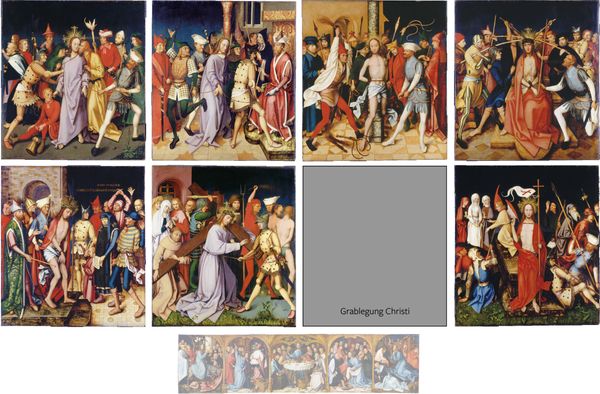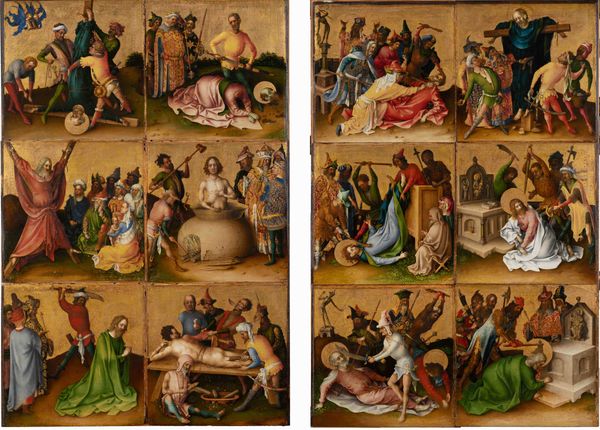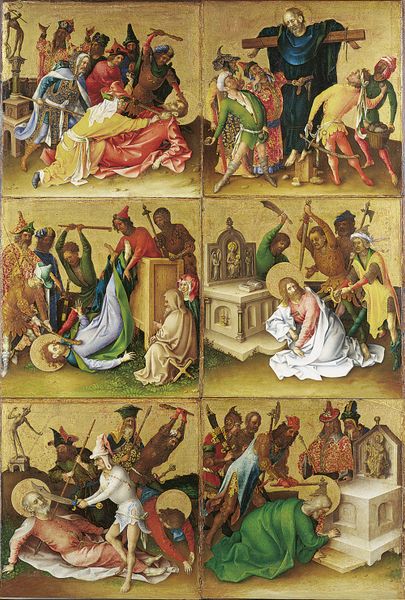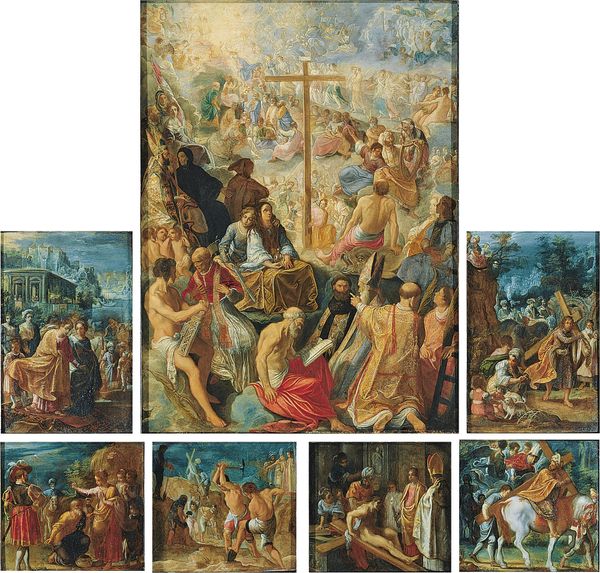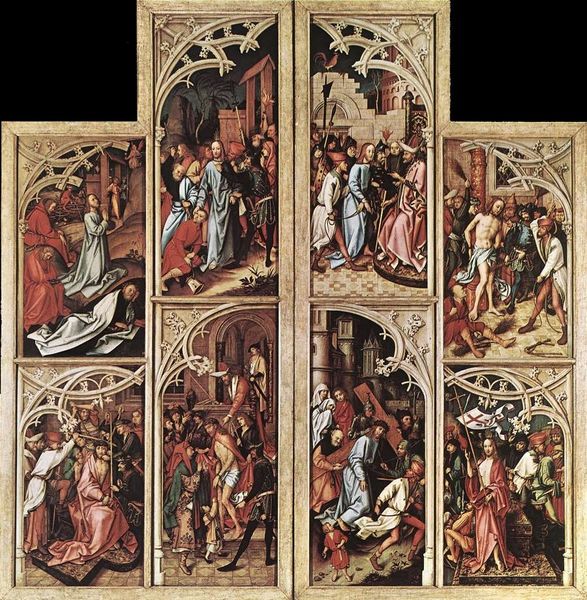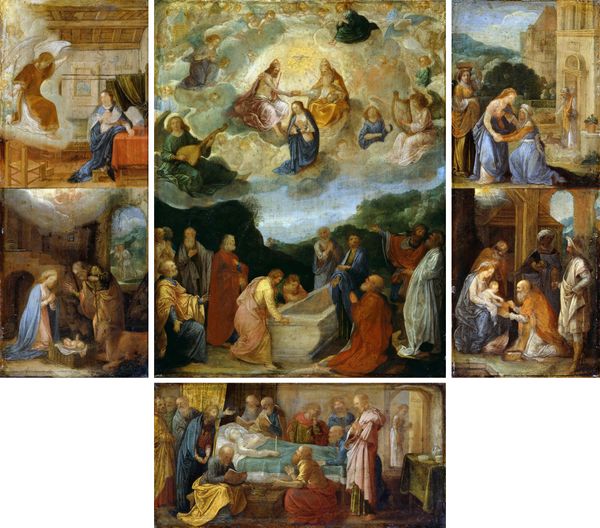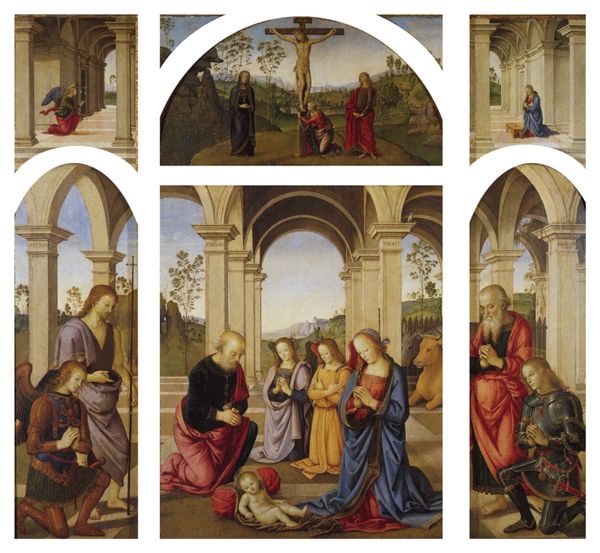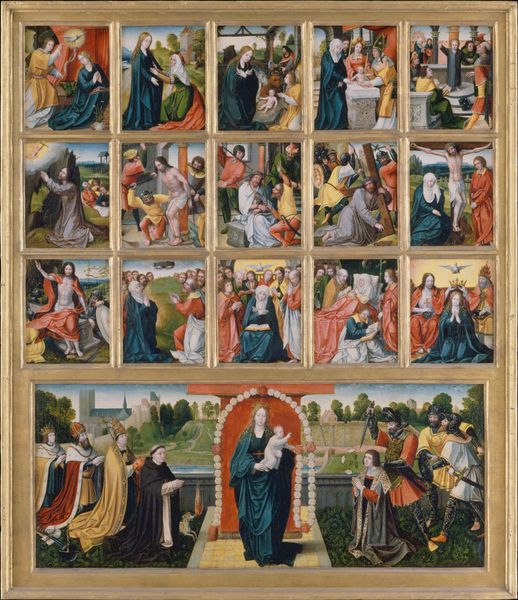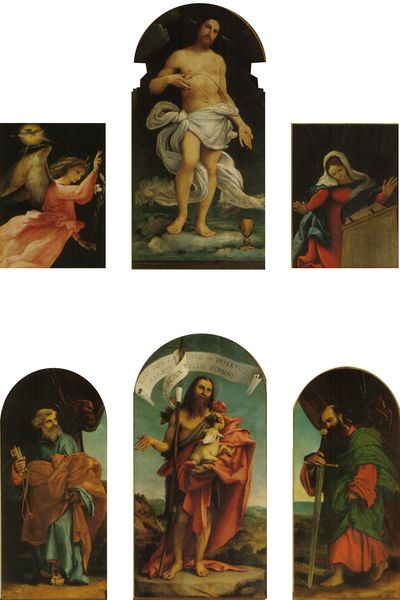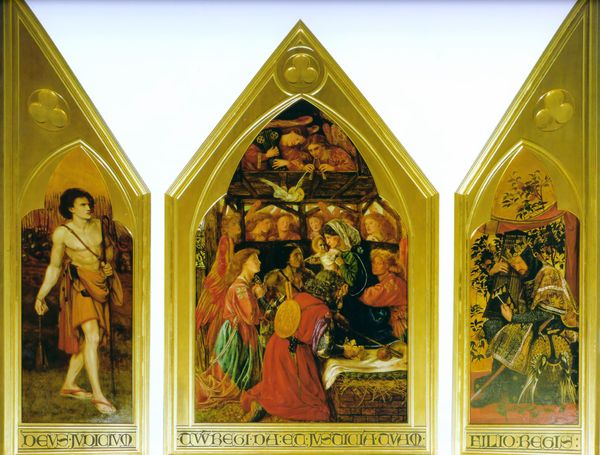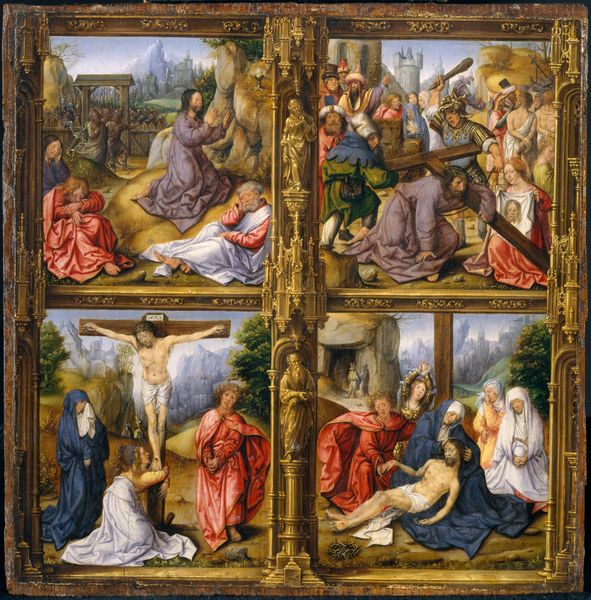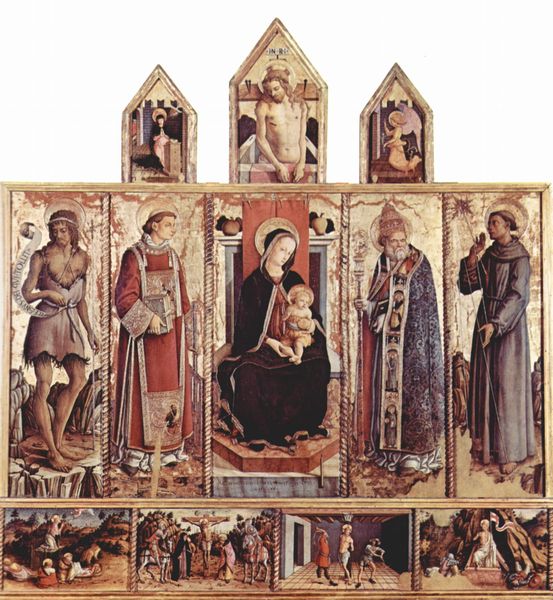
oil-paint
#
oil-paint
#
11_renaissance
#
jesus-christ
#
13_16th-century
#
history-painting
#
italian-renaissance
#
angel
Copyright: permanent loan
Editor: This is the High Altar of the Dominican Church in Frankfurt, an oil painting by Hans Holbein the Elder, created around 1501. The whole thing feels... well, rather busy. What's catching my eye are those almost diagram-like sections at the top – they’re definitely unique! What do you see in this piece? Curator: It is busy, yes, but that visual density carries profound meaning. Those "diagram-like" sections at the top—they depict the Tree of Life and the Tree of Jesse. They visualize genealogy, specifically, the lineage of Christ, demonstrating his connection to both earthly and divine realms. Notice how figures sit within a kind of vine-like structure. Editor: So, the vines visually represent the familial connections? The figures are almost like fruit on a vine! Curator: Precisely. It’s a potent symbol of continuity and inheritance. Think about what a family tree represents: shared history, values, identity. The artist uses recognizable visual cues – halos, clothing – to identify each figure within that sacred lineage. The scenes of the Passion are rendered as almost quotidian happenings. Have you ever thought about religious icons like those panels not as dramatic exceptional events but like part of someone's ordinary existence? Editor: That's such an interesting perspective! Considering these religious events as integrated into daily life... It shifts my understanding of the whole piece. Curator: Visual symbols create a bridge across centuries. This piece speaks not just of Christ's lineage but of our own connection to history, memory, and cultural values that transcend time. Editor: I didn't expect to find so much meaning packed into a family tree! Curator: Symbols offer paths into richer understanding if we trace their branches back through history.
Comments
stadelmuseum about 2 years ago
⋮
When the Frankfurt Dominicans needed a new high altar shortly before 1500, they summoned Hans Holbein the Elder from Augsburg along with his assistants. Consisting of a central section probably featuring sculptures, two wings – each painted on both sides – and a predella, the retable they created could be opened out twice. The predella and the paintings revealed by the first opening recounted the Passion from the Entry into Jerusalem to the Resurrection. When the fronts and backs of the wings were separated in the early nineteenth century, the Entombment scene was lost.
Join the conversation
Join millions of artists and users on Artera today and experience the ultimate creative platform.
